Economic Competitiveness & Inclusion Plan: Background & Introduction
 Developing a comprehensive economic development strategy has been identified as a Strategic Priority by the county for some time. In 2019, Ramsey County took this charge and began leading the development of a comprehensive economic development strategy centered around equitable growth and strengthening economic competitiveness. The process has been led by the county, with the help of local and national consultants that supported the development of in-depth analyses of the county’s economy, including:
Developing a comprehensive economic development strategy has been identified as a Strategic Priority by the county for some time. In 2019, Ramsey County took this charge and began leading the development of a comprehensive economic development strategy centered around equitable growth and strengthening economic competitiveness. The process has been led by the county, with the help of local and national consultants that supported the development of in-depth analyses of the county’s economy, including:
- A market and industry cluster analysis.
- A property-based fiscal analysis.
- A countywide housing assessment.
This work was informed throughout by the engagement of residents, businesses, community leaders, a steering committee, and the Ramsey County Board of Commissioners, all of whom helped shape the development of an implementable plan that outlines economic and community objectives to pursue over the next five years.
Consulting Team
- Fourth Economy - Housing Analysis, Economic Analysis, Implementation.
- MZ Strategies - Housing Analysis, Economic Analysis, Implementation.
- Center for Economic Inclusion - Community Engagement, Strategic Advisor, Equity Framework, Implementation.
- Neoo Partners Inc. - Community Engagement, Strategic Advisor, Equity Framework, Implementation.
- URBAN3 - Property Value Analysis, Comparative Analysis.
Land Acknowledgement Statement
Every community owes its existence and vitality to generations from around the world who contribute their hopes, dreams, and energy to making the history that led to this moment.
Some were brought here against their will, some were drawn to leave their distant homes in hope for a better life, and some have lived on this land since time immemorial. Truth and acknowledgement are critical to building mutual respect and connection across barriers of heritage and difference.
Ramsey County is located on the ancestral lands of the Dakota People. We acknowledge the Ojibwe, the Ho Chunk, and the other nations of people who also called this place home. We pay respects to their elders, past and present, and consider their treaties made by the tribal nations that entitle non-Native people to live and work on traditional Native lands. We also consider the many legacies of violence, displacement, migration, and settlement that influence us to this day.
This acknowledgement given in the U.S. Department of Arts and Culture Honor Native Land Guide – edited to reflect MN tribes. In review with St. Paul Indians in Action and endorsed by Shannon Geshick, Executive Director of the MN Indian Affairs Council.
A message from Ramsey County Board Chair
Ramsey County is deeply committed to advancing racial equity by reducing racial and ethnic-based disparities. We understand that a vibrant, competitive county economy is built on adequate, high-quality housing options, paths to entrepreneurship, an innovative business sector, thriving commercial corridors, and ample opportunities for workforce development. These outcomes are only possible by ensuring that all of our county residents and workers have equitable and inclusive access to all of these opportunities. Too many of our fellow neighbors are hurting from the lack of access to quality housing, the barriers to starting a small business, and the inability to accumulate household wealth. These disparities are particularly acute for our Black, Indigenous, and People of Color neighbors. And the COVID-19 pandemic has only exacerbated those challenges.
While we cannot totally erase the harm caused to past generations by racial discrimination in housing and employment, the county commits to our role in forging a better path forward. The county recognizes and acknowledges this requires deconstructing barriers and changing systems, structures, policies, and outcomes.
This Economic Competitiveness and Inclusion Vision Plan serves as an important step toward achieving two longstanding county goals: 1) Cultivating economic prosperity and investing in neighborhoods with concentrated financial poverty through proactive leadership and inclusive initiatives; and 2) Enhancing access to opportunity and mobility for all residents and businesses through connections to education, employment and economic development throughout our region. You’ll read in the pages that follow about the eight strategies and related actions that will guide this work as part of our economic recovery.
However, there is a limit to what the county can accomplish alone. We will use the Vision Plan strategies to clarify and align our work with all Ramsey County residents, communities, and other interested partners to chart a course for a more equitable and competitive Ramsey County economy for years to come.
Toni Carter
Ramsey County Board Chair
About the artists
This plan has been brought to life through illustrations and graphics created by three area artists. Here are their stories.
 Leeya Jackson
Leeya Jackson
Leeya Rose Jackson is an Art Director, Designer, and Illustrator born and raised in Detroit, Mi. She creates works that explore and celebrate Black Femme and Queer identities. She is the Creative Founder/Head Designer of Noisemakers Design Shop, aimed at providing equitable and unique design for BIPOC small businesses and initiatives. In 2020, Leeya found a new solace in beginning to digitally illustrate as well as design. She goes by Leeya Makes Noise/Noisemakers because her work is loud, colorful, bold and dares to center Black identity first.
 Mayumi Park
Mayumi Park
Mayumi is a Korean-Okinawan self-taught designer and organizer who splits her time between doing independent work in graphic design (emphasis on illustration) and her role as the community engagement organizer for a local public art organization. She enjoys collaborating with community members whose goals are rooted in liberation movement building and hopes to eventually work towards establishing a multidisciplinary, workers-run design cooperative alongside likeminded creatives. She resides in St. Paul.
 Khou Vue
Khou Vue
Khou Vue is a first-generation Hmong-American graphic designer and illustrator. After a decade-long career as a designer, she felt a strong pull toward illustration and storytelling. In her work she strives to portray themes of femininity, culturalempowerment, and social awareness. She resides in North St. Paul.
Planning during an unprecedented time
As the Economic Competitiveness and Inclusion Plan (ECI) planning process continued to assess the economic strengths and weaknesses within the county, a global pandemic began to take hold throughout the United States, with the health and economic impacts most acutely felt by people of color. Then on May 25, 2020, George Floyd, a 46-year-old Black man, was killed by Minneapolis police. This action, recorded for all to bear witness, set off a global racial justice protest that highlighted racial disparities and persistent institutional structural racism, culminating in the global recognition that Black Lives Matter.
Our communities and economy are in crisis, facing uncertainty about the future and expected long-term negative economic impacts on our most vulnerable residents and businesses. Ramsey County leaders, residents, and business owners have been forced to navigate unfamiliar risks and expectations. Yet these same challenges also have created a deeper understanding that the status quo that existed before 2020 is not sustainable, is deeper than most of us understand, and requires actions as dramatic, sustained, and impactful as the actions that led us to this point.
Many leaders in all sectors have issued pledges to do better. Despite decades of recognition that the current economics of race are not sustainable and unfulfilled pledges by regional leaders to take action since the 2008 recession, little positive impact occurred to improve outcomes for Black, Latinx, Asian, and Indigenous people. As Tawanna Black from the Center for Economic Inclusion wrote in a May 27, 2020 call to action addressed to corporate leaders in Minnesota, “...over the 10-year period of recovery since the last recession, Minneapolis-St. Paul has only closed the racial wage gap between White Workers and Workers of Color by $541 (Source: Brookings Metro Monitor).” This plan seeks to define a set of economic priorities and actions that mitigate the impacts of institutional structural racism and disinvestment in our Black, Latinx, Asian, and Indigenous communities while simultaneously accelerating economic growth and competitiveness in Ramsey County, dispelling the myth that the two are mutually exclusive.
The COVID-19 pandemic also meant that the development of this plan evolved differently than originally planned, and differently from other county planning efforts. In-person meetings pivoted to virtual engagement, with different formats utilized to engage a diversity of voices representing the county’s many local communities, business and industry types, community-based organizations, affordable housing partners, and many others. An important goal of this plan is to advance economic inclusion by leveraging and aligning the County’s efforts with those working at the local, regional, and state levels.

Artist Statement - Khou Vue
 "I was thrilled to learn of this initiative by Ramsey County to take accountability and try to take a step in reversing its historically racist past. When I researched more into the policies that allowed the construction of highway 94 right through the majority Black Rondo neighborhood, I was enraged and shocked. In my illustrations I wanted to portray growth, vitality, and abundance; that through making amends we can all begin to thrive."
"I was thrilled to learn of this initiative by Ramsey County to take accountability and try to take a step in reversing its historically racist past. When I researched more into the policies that allowed the construction of highway 94 right through the majority Black Rondo neighborhood, I was enraged and shocked. In my illustrations I wanted to portray growth, vitality, and abundance; that through making amends we can all begin to thrive."
Connect
www.koovoo.me
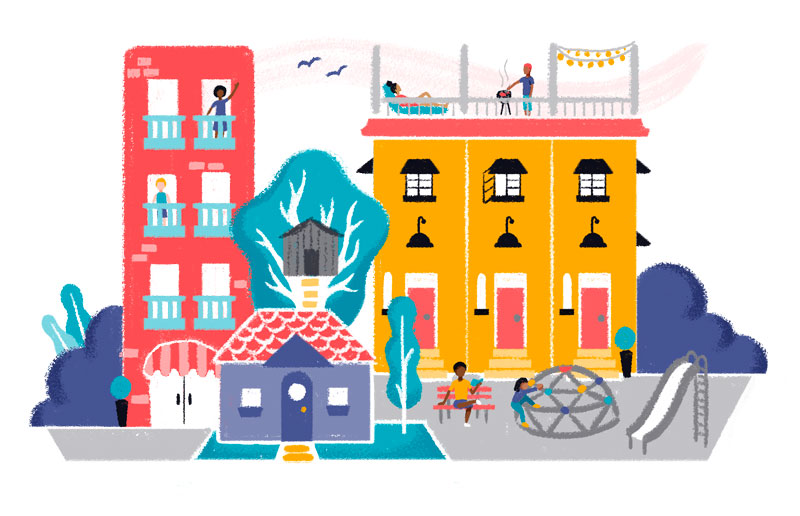
Charting a more competitive and equitable economic future
For decades, Ramsey County has seen steady economic growth as the broader region seized opportunities in health and life sciences, food and water, headquarters and business services, financial services and insurance, and advanced manufacturing. Ramsey County sits in the heart of the Twin Cities seven-county metropolitan area and is the second most populous county in the state. With more than 550,000 residents, it is the most fully developed, racially diverse and densely populated county in Minnesota. Development of this Economic Competitiveness and Inclusion Plan began in early 2020 and initial observations noted an economy with the following characteristics:
- Nearing full employment, with tight labor market conditions but also the realization that many residents, particularly Black, Latinx, Asian, and Indigenous people face barriers to workforce participation, family-sustaining wages and affordable housing.
- Transit corridor development building momentum with a focus on the Riverview Corridor, Rush Line, and METRO Gold Line.
- A desire to create a more intentional and comprehensive inclusive economic and workforce development alignment.
- Strong economic development infrastructure with rail, river, and air infrastructure.
The secret to Ramsey County’s growth is the thing that makes its economy unique:
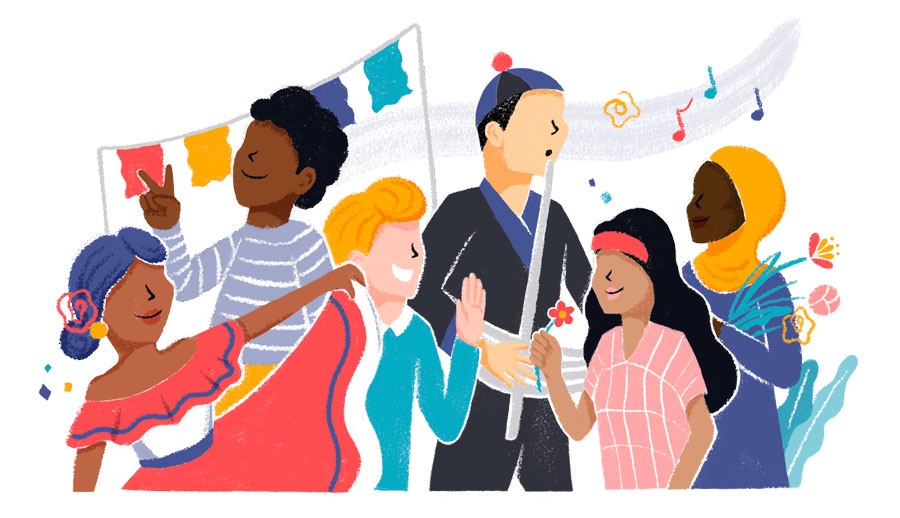 A place as rich in cultural vitality as it is rich in economic opportunity
A place as rich in cultural vitality as it is rich in economic opportunity
Ramsey County has the most diverse population of any county in Minnesota. Its racial and ethnic makeup mirrors that of the United States. Black, Asian, Latinx, Indigenous, and multiracial populations of color comprise roughly 40% of the county’s current population. The largest populations of color are Asian (13%) and Black (11.1%). About 7.3% of residents have a Hispanic or Latinx ethnic background. 21.9% of residents aged five years and older live in homes where a language other than English is spoken. A diversity of culture and heritage uniquely position Ramsey County to create economic opportunity. Inviting visitors to explore, learn about, and experience the many cultures in Ramsey County, known as ‘cultural tourism,’ not only creates new economic opportunities but will elevate awareness of the many rich cultures present.
An affordable place to build a life for seniors, young professionals, and their families
One of Ramsey County’s strengths is the diversity of its households and of its housing stock, which includes newer rental opportunities, traditional multi- and single-family homes and apartments. Some of these units are older ‘naturally occurring
affordable housing’ (NOAH). Over the last decade, the county has seen steady population growth, with more people choosing to live and work in neighborhoods offering a range of amenities both within Saint Paul and throughout the many other localities across the county.
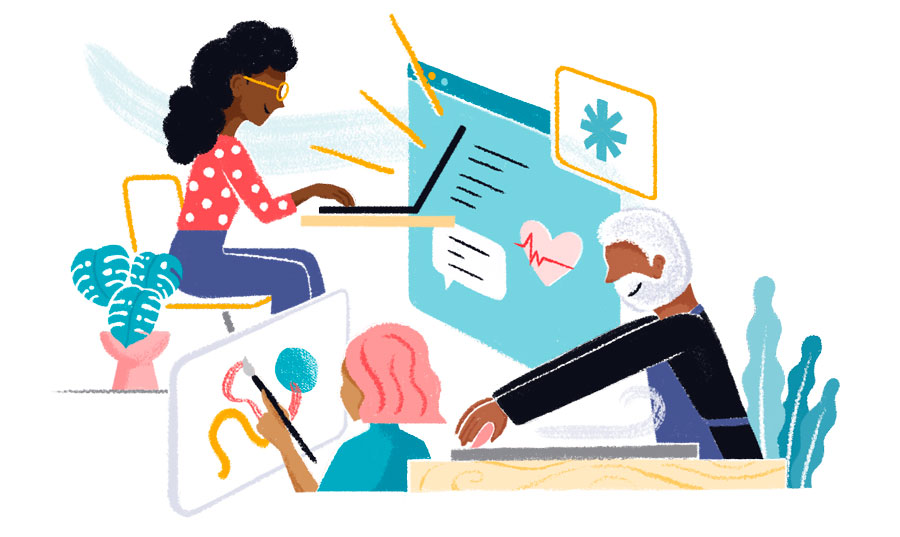 A niche for creativity, steeped in legacies of old and emerging regional innovation assets
A niche for creativity, steeped in legacies of old and emerging regional innovation assets
Ramsey County’s agile economy is paving the way for new industries to emerge, as clusters of innovation in technology, medical device manufacturing, and the creative economy breed new microenterprise opportunities.
Ramsey County’s strengths and assets position it well for a vibrant future. Its ability to work in partnership to cultivate a diverse workforce, invest in neighborhoods for all, and nurture a growing industry mix is what makes its economic future promising. Conversely, a threat to these assets – and its capacity to respond accordingly – would compromise Ramsey County’s ability to thrive in an ever-changing economy.
We know the opportunity ahead is challenging, as Black, Latinx, Asian, and Indigenous people within Ramsey County are disproportionately impacted by the recent COVID-19 global pandemic and the social unrest that followed the killing of George Floyd.
Such disparity, however, is not a novel occurrence. The historical extraction of wealth and devaluation of Black homes, businesses and bodies, coupled with ongoing disparities in wages, investments, and access to resources in Black, Latinx, Asian, and Indigenous communities has affected generations of households across the United States, and Ramsey County is not immune. Racial inequities have been proven to impact GDP, economic growth, and the well-being of residents. Racial equity and economic inclusion is imperative to Ramsey County’s economic competitiveness and prosperity.
Racial Equity is a regional competitiveness imperative
 Closing the wage gap would add $2.3 billion in annual earnings for Ramsey County’s Black, Brown, Indigenous and other residents of color, promoting a more vibrant economy and more equitable prosperity1.
Closing the wage gap would add $2.3 billion in annual earnings for Ramsey County’s Black, Brown, Indigenous and other residents of color, promoting a more vibrant economy and more equitable prosperity1.
Wage disparities across racial lines are softening competitiveness and creating unnecessary housing burdens for individuals and families. A renewed - and targeted - focus on job access, skill training, and high-wage industry growth, coupled with intentional efforts to dismantle institutional racism, can create economic pathways. This has the potential to close stagnant racial income and wealth gaps while simultaneously accelerating economic growth in Ramsey County.
The intergenerational wealth gap resulting from past actions in Saint Paul’s Rondo community is estimated at $90 million in lost home equity2.
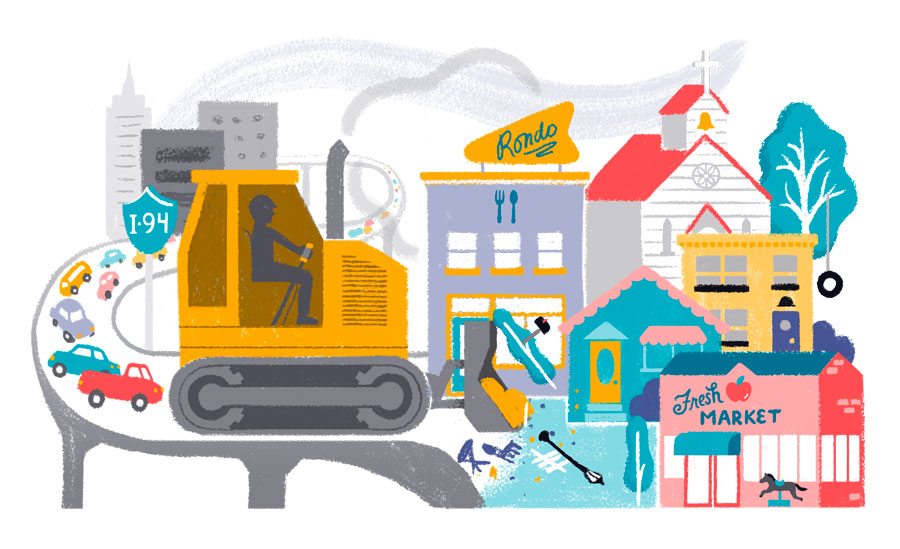 Historic wealth extraction and present day undercapitalization of the Black community continues to limit the county’s ability to mitigate poverty and fight displacement. The county must take action now to undo the racism and the symptoms of racism experienced by workers and families for generations as a result of economically and racially exclusive policies and actions of the past.
Historic wealth extraction and present day undercapitalization of the Black community continues to limit the county’s ability to mitigate poverty and fight displacement. The county must take action now to undo the racism and the symptoms of racism experienced by workers and families for generations as a result of economically and racially exclusive policies and actions of the past.
“The cost of inaction is too great. If we wish to chart a path toward recovery and create a more resilient future, then we must ensure our commitment to our most vulnerable residents. When our most vulnerable residents thrive, we all thrive.”
-Ramsey County Economic Inclusion Build Session Participant
COVID-19 caused a shift in priorities, as well as heightening the urgency for existing priorities focused on closing disparities. All efforts toward recovery must be racially responsive and economically sound if Ramsey County is to prosper in the coming decade. Disparities highlighted during the pandemic demand us to reimagine the economy to ensure that the systems within the county, and the entities its residents and business owners rely upon, apply racially inclusive and equitable policies to mitigate the economic harm done by generations of racially exclusive policies and practices.
 Ramsey County needs 500 more minority business enterprises (MBE) to match the U.S. ownership rate. Adding 500 businesses owned Black, Latinx, Asian, and Indigenous people would create 6,690 new jobs in Ramsey County3.
Ramsey County needs 500 more minority business enterprises (MBE) to match the U.S. ownership rate. Adding 500 businesses owned Black, Latinx, Asian, and Indigenous people would create 6,690 new jobs in Ramsey County3.
A widening undercapitalization in of minority business enterprises is stifling overall economic growth, causing the county to miss out on the economic contribution of approximately 500 Black, Latinx, Asian, and Indigenous business enterprises.
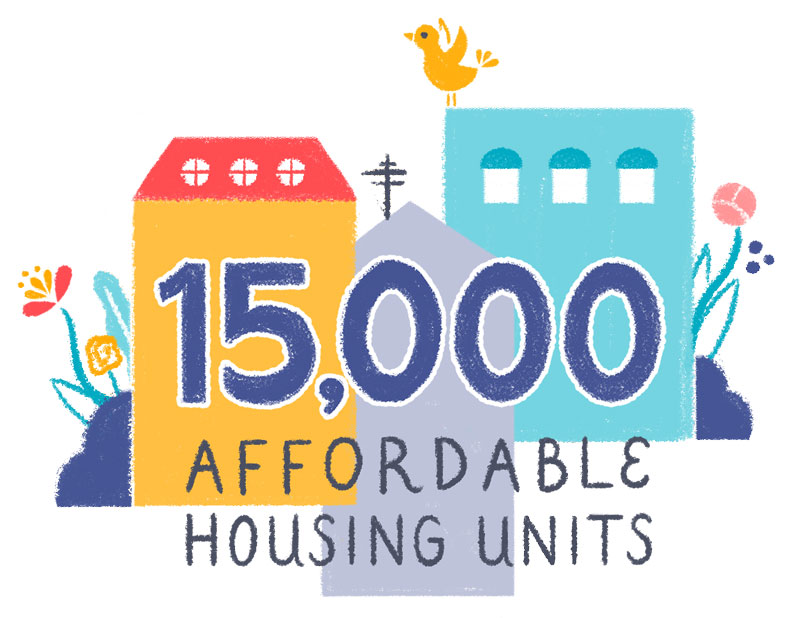 Ramsey County needs 15,000 deeply affordable housing units to address the need for those most severely impacted by the lack of affordable housing4.
Ramsey County needs 15,000 deeply affordable housing units to address the need for those most severely impacted by the lack of affordable housing4.
Most Black, Latinx, Asian, and Indigenous cost-burdened four-person households are earning less than $51,700, which equates to 50% of the area median income (AMI). Black, Latinx, Asian, and Indigenous renters are more likely to be cost-burdened than white renters. Ramsey County’s biggest need is affordable rental units at 30% AMI, plus a need for more rental units with two or more bedrooms5.
Over the next few years, Ramsey County’s economic prosperity will be driven through a commitment and focus on growing new, high-wage jobs and increasing access to these jobs. This will increase its most important drivers of economic growth: small businesses. This new and competitive economy must center the voices of those most impacted by historic injustice and the global pandemic. Because County resources are not sufficient to meet all of the needs identified, our priority is on addressing the needs of our most economically vulnerable residents and investing in key economic, cultural and transportation corridors. County leaders and staff, together with partners across the housing spectrum, will work together to address critical housing needs, support services, and disparities; to align public, private and philanthropic resources in support of new housing supply, and preserving existing affordable housing while improving climate resiliency and reducing household utility costs.
These economic priorities must work in tandem with the county’s priorities around place-based investments to ensure residents have an affordable place to call home and can affordably get to where they need to go. This involves leveraging and prioritizing resources, greater cross-jurisdictional coordination and deeper partnerships with cities across the county to develop sites for industry and housing, and cultivating opportunities for residents to lead cultural and business district growth and anti-displacement mitigation.
Ramsey County is committed to growing its economic competitiveness through strategies centered on inclusion so that all households are able to live in stable, safe housing located near jobs, transportation, essential services, and community amenities. Ramsey County will thrive because of its racial, ethnic, and socioeconomic diversity, not in spite of it.
1: Fourth Economy: If all Black, Latinx, Asian, and Indigenous residents received the same average wages as white workers.
2: Fourth Economy: The Ramsey County Minority-owned Business Enterprise (MBE) ownership gap versus the U.S average.
3: Fourth Economy: If Ramsey County closed the MBE ownership gap by adding 500 MBEs at the same average employment for current MBEs in Ramsey County (13.4) it would add 6,690 new jobs.
4: 65,000 households in Ramsey County pay more than 30% of their income on housing, while nearly 30,000 pay more than half of their income on housing. The gap of 15,000 affordable rental units for the lowest income residents (AMI-30) is the gap that the market is least likely to address.
5: The Area Median Income for the Minneapolis-St. Paul-Bloomington, MN-WI HUD Metro FMR Area in 2020 is $103,400. See report.
The County’s Role
Implementation of the plan requires Ramsey County to partner with intentionality and shared accountability. The success of this plan will be measured by the County’s demonstrated ability to commit to the change management necessary to re-imagine and reform policies and investments, and set and hold themselves and partners accountable to racial equity goals in order to support the actions necessary for dismantling systemic racism and ultimately closing racial wealth gaps. By first becoming an employer, investor, customer, and partner of choice for Black, Latinx, Asian, and Indigenous talent, businesses, and residents; and then instituting policies, practices, and initiatives that fuel inclusive economic competitiveness, the county will build trust, foster racial inclusion and belonging, and model the principles of equity that all entities and employers must adopt for racial equity to be realized.
Ramsey County will adopt measurable, meaningful goals in each arena within its span of control to drive inclusive economic impact in undercapitalized communities, while also leading region-wide efforts to institute bold racially inclusive action to pilot new approaches, scale up effective programs, and leverage existing capacity and resources to accelerate local action and results. One of Ramsey County’s greatest assets is the racial and ethnic diversity of its population. Realizing this same racial and ethnic diversity in the economic health of businesses, employers and community-based organizations operating in the county is the key to its economic competitiveness and prosperity. In its response to the economic and social disruptions of 2020, the county developed transformative new partnerships and approaches to supporting Black, Latinx, Asian, and Indigenous businesses and organizations. These lessons inform its work going forward to build capacity and strengthen relationships with community-based organizations and local government partners to help facilitate culturally-responsive policy change.
A Holistic Plan
County Goals
- Cultivate economic prosperity and invest in neighborhoods with concentrated financial poverty
- Enhance access to opportunity and mobility for all residents and businesses
Strategies
- Ensure place-based inclusion, create resilient and equitable communities

- Preserve and increase the supply of rental housing units for lowest-income residents
- Expand affordable homeownership opportunities and improve housing stability for communities that have experienced historic wealth extraction
- Foster inclusive economic development within county transit, economic, and cultural corridors
- Support communities in equitable site development

- Foster economic competitiveness, innovation, and transformation
- Sustain and accelerate workforce recovery programs
- Develop pathways to entrepreneurship and Black, Latinx, Asian, and Indigenous business ownership
- Attract and grow high-wage industry and innovation: technology, advanced manufacturing, and life sciences
- Strengthen business retention and expansion infrastructure to support communities
Outcomes
When we are successful, Ramsey County will experience...

- Fiscal health
- Inclusive Wealth Building
- Economic Resilience
Implementation Considerations
Across all priority areas, given Ramsey County’s limited capacity, it is vital for the county to amplify and partner with existing efforts. Even so, the county has a role to play for each strategy presented in this plan; some actions provide the opportunity for the county to function in multiple ways. They include: The plan includes eight strategies designed to support inclusion and economic competitiveness. They are organized across two areas of focus: place-based enhancements and economic competitiveness, innovation, and transformation for Ramsey County residents. Under each strategy, we have highlighted key actions that the county and its partners can take to advance the strategy. These recommended actions are just the beginning of the implementation process and each require a sustained effort to achieve success. A plan is delivered in a community at a point in time, responding to what is known. A great plan, led by committed stewards, is a living document and conversation that continues throughout the months and years following its adoption. Ramsey County is committed to an ongoing process of action, assessment, recommitment, and accelerated solutions to truly achieve an inclusive and competitive community.
Investment
These are the actions where Ramsey County is the primary financier for the initiative at hand, whether a grant, loan, or outright investment.
Policy
A change in internal county operating policies, or the advocacy for or adoption of county-wide legislation.
Program
An explicit initiative designed and implemented by the county and its partners.
Coordination
Acting as a convener or collaborator with partners or existing aligned initiatives.
A Year of Engagement
Thousands of Ramsey County residents and interested individuals were involved in the Economic Competitiveness and Inclusion planning process.
Public Community Meetings
- Working Group Meetings
- Strategy Build Sessions
- Steering Committee Meetings
- Community Action Team Meetings
- Ramsey County Board Meetings
- Housing Town Hall
- Elected Officials Summit
30+ Interviews Conducted
- Community Partners
- Elected Representatives
- Community Members
- State Program Leaders
- Philanthropy
- Business Leaders
2,000 website visitors
Eliciting 124 responses
Next section: Ensure Place-based Inclusion and Create Resilient and Equitable Communities >
